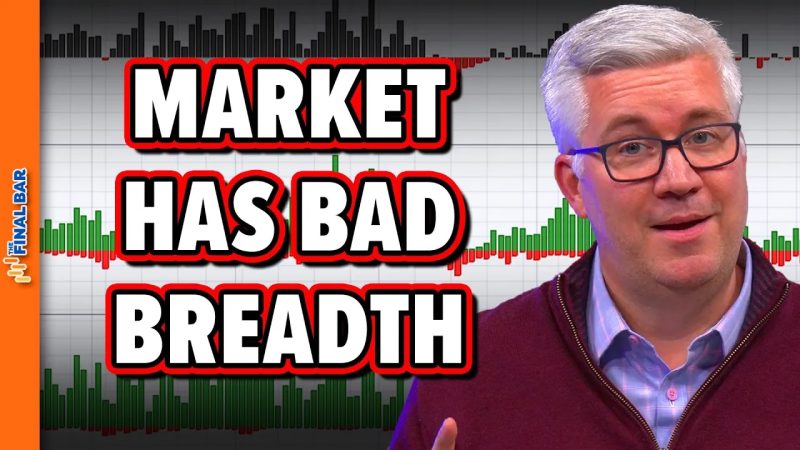Market breadth is a key indicator that is often used to assess the overall health of a stock market. Investors and analysts closely monitor market breadth to gauge the level of participation and strength of a market rally or decline. When market breadth is strong, it indicates broad-based participation across a wide range of stocks, which is typically seen as a positive sign for the market. However, poor market breadth can signal underlying weaknesses and potential vulnerabilities in the market.
One of the main concerns associated with poor market breadth is the lack of confirmation in the market’s direction. Market breadth measures the number of stocks that are advancing versus declining. When the market is advancing but a large portion of stocks are not participating in the rally, it suggests that the strength of the market is not as robust as it may seem on the surface. This lack of confirmation from a broad base of stocks can undermine the sustainability of a market rally and increase the likelihood of a reversal.
Furthermore, poor market breadth can also be indicative of underlying sectoral weaknesses or broader market imbalances. For instance, if only a handful of sectors are driving the market higher while others are lagging behind, it may point to a lack of diversity and breadth in the market rally. This concentration of gains in a few select sectors can make the market more susceptible to sharp corrections if the leadership sectors start to falter.
Investors should be particularly wary of poor market breadth during times of market exuberance or euphoria. When market sentiment is overly optimistic and investors are piling into a small number of high-flying stocks, it can lead to a disconnect between stock prices and underlying fundamentals. This phenomenon, known as a narrow market, can create the conditions for a sudden and sharp correction when sentiment shifts or market dynamics change.
In order to protect against the risks associated with poor market breadth, investors should pay attention to other key market indicators and data points. These may include market volatility, trading volume, sector rotation, and macroeconomic trends. By taking a comprehensive approach to market analysis and staying informed about the broader market environment, investors can better position themselves to navigate periods of poor market breadth and potential market downturns.
In conclusion, while poor market breadth is a cause for concern, it should not be viewed in isolation. It is one of many important indicators that investors can use to assess the health and strength of the stock market. By staying vigilant and keeping a watchful eye on market breadth and other key indicators, investors can make more informed decisions and better navigate the complexities of the stock market.
